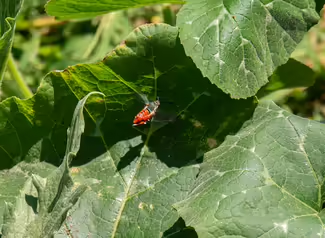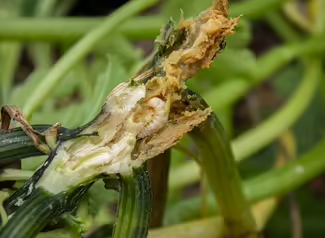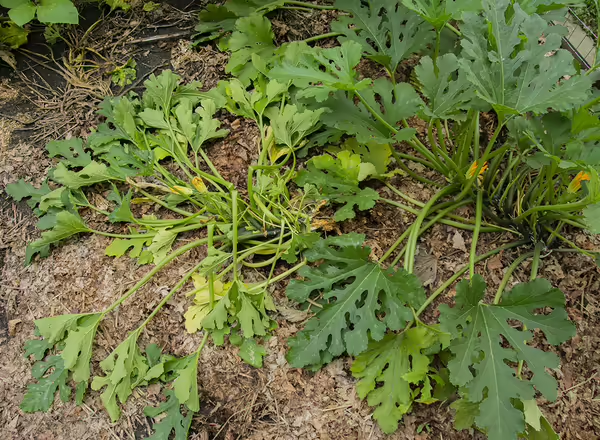
There’s nothing more devastating than walking out to your garden to discover your squash plants are wilted or dead. An insect known as the squash vine borer is one that will cause damage to your cucurbit plants by tunneling into the stems. Once you have had an encounter with squash vine borer, it is one you will never forget.
The adult squash vine borer is a colorful moth, 5/8 inch long with orange and black legs. The hind legs are heavily fringed with orange and black hairs. The adult may be mistaken for a wasp in appearance and flight. Young larvae hatch from dark reddish brown eggs and grow to about one inch long with a whitish body and brown head.
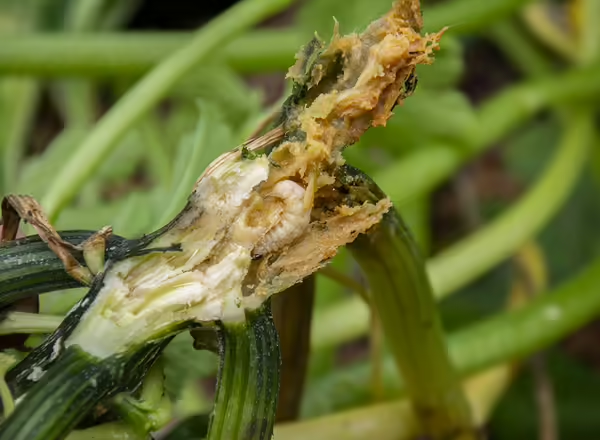
Adults emerge in late June and the first of July from overwintering cocoons in the soil and lay eggs on all plant parts except upper leaf surfaces. The majority of eggs are laid on the basal stem. Hatching larvae usually bore directly into the stem and feed internally for about 4-6 weeks, though some may feed externally prior to entering the stem. At the end of this period, larvae enter the soil and spin a cocoon about two inches below the surface. There is one generation a year in northern and central Illinois and a possible second generation in southern Illinois.
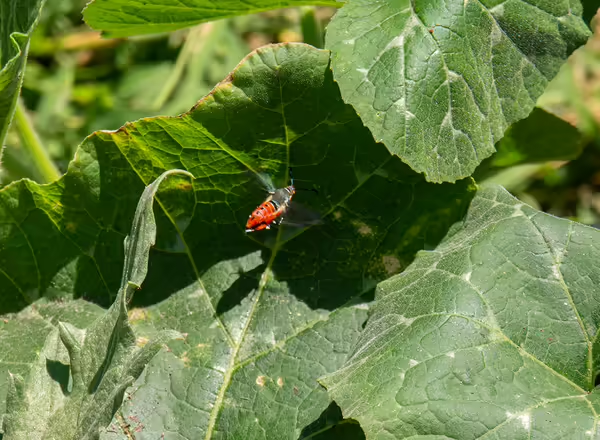
Squash Vine Borer Damage
The larvae bore into the stem and feed on tissue, hollowing out the vines. The majority of larval activity will occur at the basal four feet of vine. Plants wilt and usually rot and die beyond the point of attack. The first indication of an attack will be the sudden wilting of a long runner or of the entire plant. Upon close inspection, frass may be found extruding from the infested stem. Partial or complete crop loss may occur.
Squash Vine Borer Control
The key to controlling squash vine borer is to control the borers before they enter the stem; once inside the vine, insecticides are ineffective. Home gardeners may have success with deworming vines by slicing the vine lengthwise near damage; these areas should be immediately covered with soil and kept well-watered. In early summer, monitor plants weekly for adults. Adult moths are dark gray with 'hairy' red hind legs, opaque front wings, and clear hind wings with dark veins. Unlike most moths, SVB moths fly during the daytime appearing more like a wasp than a moth. Insecticides can be used to control moths or newly hatched larvae; however, application timing is extremely important for effective control which can be difficult to achieve. Other measures of control include removing and destroying infested vines to break the life cycle. Tillage can also help to expose overwintering insects. By rotating the squash to another location within the garden, you can also reduce insect pressure.
Luckily, Illinois Extension horticulture experts offer more great advice for dealing with Squash Vine Borer Damage. Read more from Katie Parker in What could be killing my squash plants? and Chris Enroth's Dealing with Squash Vine Borer.
Good Growing Fact: Of course, there are other common insects or diseases including squash bugs, cucumber beetles, spider mites, and powdery mildew that can cause issues with growing plants in the cucurbit family. It is important to scout frequently for disease and insects. When scouting, be sure to thoroughly check plants including under leaves. If you are unsure of what insect or disease you have, contact your local Extension office.
